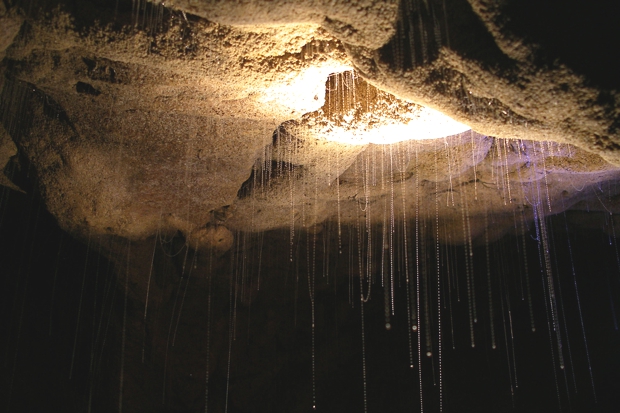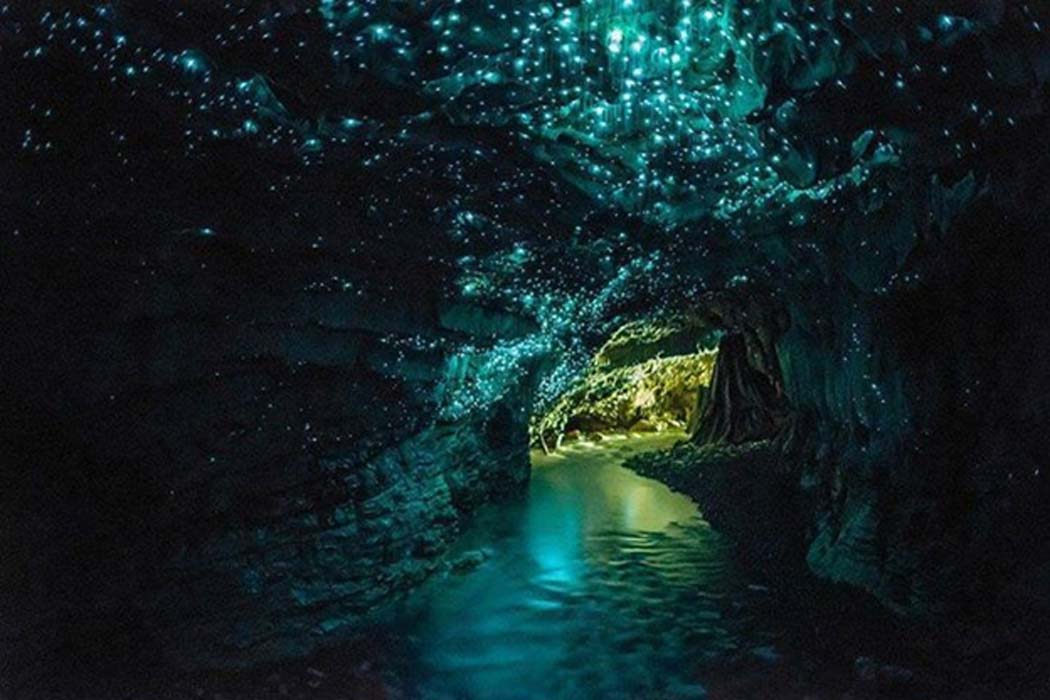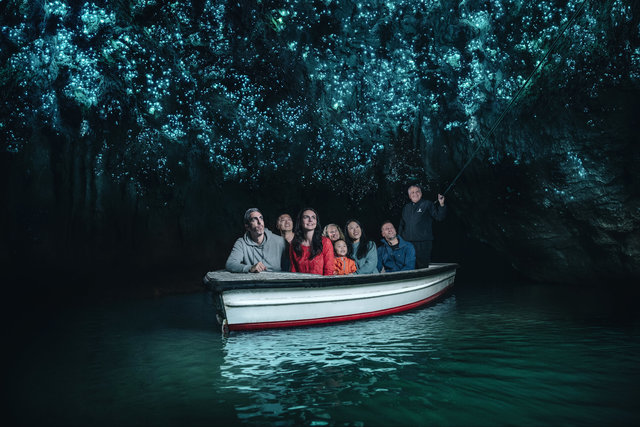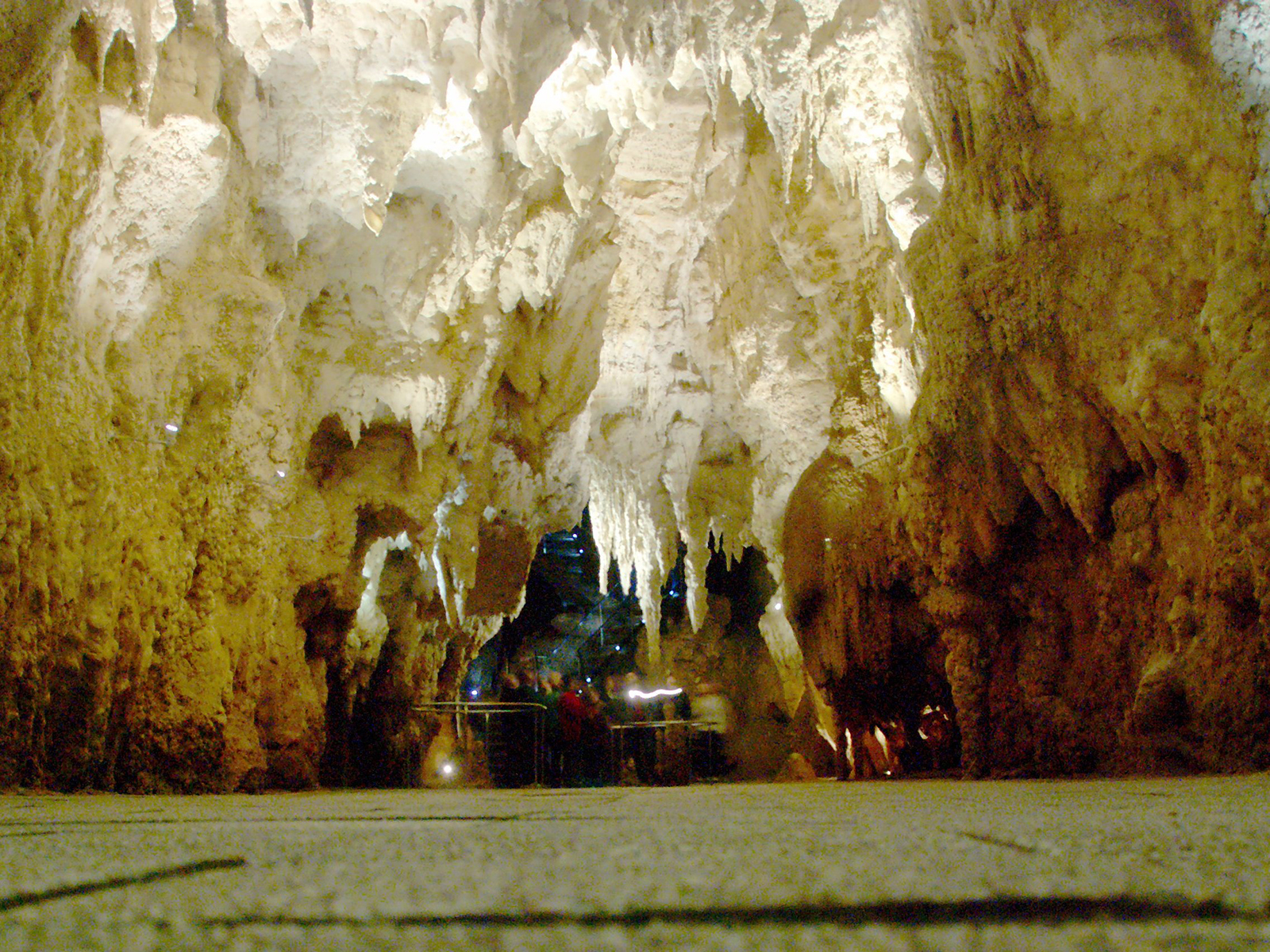The Waitomo Glowworm Caves attraction is a cave at Waitomo on the North Island of New Zealand. It is known for its population of Arachnocampa luminosa, a glowworm species found exclusively in New Zealand. This cave is part of the waitomo streamway system that includes the Ruakuri Cave, Lucky Strike, and Tumutumu Cave.
The attraction has a modern visitor centre at the entrance, largely designed in wood. There are organized tours that include a boat ride under the glowworms.
The name “Waitomo” comes from the Māori words wai, water and tomo, hole or shaft. The local Māori people had known about the caves for about a century before a local Māori, originally from Kawhia, Tane Tinorau, and English surveyors, Laurence Cussen and Fred Mace, were shown the entrance in 1884 and Tane and Fred did extensive explorations in 1887 and 1888. Their exploration was conducted with candlelight on a raft going into the cave where the stream goes underground (now the cave’s tourist exit.) As they began their journey, they came across the Glowworm Grotto and were amazed by the twinkling glow coming from the ceiling. As they travelled further into the cave by poling themselves towards an embankment, they were also astounded by the limestone formations. These formations surrounded them in all shapes and sizes.
Surprising Facts:
Seeing the caves is half the fun, but learning a little more about the caves will give you a richer experience. Here are some facts you must know about it:
- Glowworms aren’t Even Worms!
The New Zealand glowworms that reside inside the Waitomo Caves are actually a species of gnat called Arachnocampa Luminosa. When you see them glowing then are in their larval stage where they can be better described as a maggot rather than a worm.
- The Caves Started Forming 30 Million Years Ago
The limestone rock that makes up the incredible stalactite and stalagmite formations started off as the bones and shells of marine life. Over millions of years, these marine fossils hardened on the seabed turning into sedimentary rock. When tectonic activity rose New Zealand out of the sea it brought this sedimentary rock with it. Then, about 1 million years ago, the rock was exposed to rain which, over time, has created large cracks that eventually became the caves we can see today.

- Glowworms Glow to Attract Insects
Glowworms mainly glow to attract other insects to their long sticky lines that they suspend from the ceiling. They also glow to attract a mate using the bioluminescence created by their tails. Chemicals in their tail react with oxygen to create this blue glow.
- There are Hundreds of Caves in Waitomo
Many people will only hear about three main caves in Waitomo but did you know there are actually hundreds of caves? What’s more, there are around 10 caves that you can explore with tours! Check them out at The Best Glow Worm Caves in New Zealand.

- You Can See Glowworms for Free in Waitomo
Waitomo is packed with many exciting ways to see glowworms. However, there are a few places where you can just rock up and check out the glow worms for free. On an evening, take a torch to the Ruakuri Bushwalk to check out glowworms along the trail. Find out more in the 15 Free Things to Do in Waitomo.
- Waitomo Means “Water Hole”
“Wai” means water and “tomo” means a hole or an opening. Makes sense!
- People Have Been Visiting the Caves for More than 100 Years
It’s said that the first person to discover the Waitomo Caves was Maori chief Tane Tinorau during the 1800s. After exploring the caves with a local surveyor, local Maori guides started taking tourists into the cave in 1904.

- Glowworms Have a Depressingly Short Life as an Adult
After about 10 months of being an egg, then a juvenile larva, then a cocoon, the glowworm finally gets to become an adult fly. However, the adult fly cannot feed so makes the most of its time by mating and laying eggs until it dies about 2-3 days later.
- Glowworms are Not the Only Cave Inhabitants
The Waitomo Caves are not only a home for glowworms, but then also hold another amazing insect called a cave weta. Otherwise known as a cave cricket, weta are endemic to New Zealand. There are 70 different species, with one of those species, the giant weta, being the heaviest insect in the world. Plus, they have been around for millions of years seeing the dinosaurs come and go. Learn more about the fascinating wildlife in New Zealand in our 20 Animals and Birds Unique to New Zealand.

- Touching the Limestone Features Can Damage Them
When on a tour in the Waitomo Caves, keep in mind that touching the limestone features can destroy them. The stalactites, stalagmites, pillars and helictites that you see in the Waitomo Caves have taken thousands of years to form. Not only are the formations delicate, but the chemicals on our skin can also have a bad reaction with the limestone.











More Stories
Indian Air Force Day: Everything You Need To Know
Earth Day: Date, History, Significance Of The Most Important Day
Jallianwala Bagh Massacre: Everything You Need To Know